Recently threads have been popping up on social media with people asking about what ID they need to travel, as well as asking about REAL ID how it effects them, and sadly some really bad information about what is needed to travel has been floating around, including a very out of date information graphic. So in tonight’s TMSM explains we will be going over some upcoming changes to the acceptable IDs that can be used by U.S. citizens when flying domestically starting in January 2018.
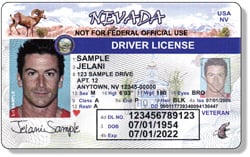 Who Needs An ID To Fly?
Who Needs An ID To Fly?Currently in the U.S. adults 18 and over must show valid ID at the security check point to be able to fly. Several of those acceptable valid ID options include a Driver’s licenses or other state photo identity cards issued by Department of Motor Vehicles (or equivalent); U.S. passport; U.S. passport card; DHS trusted traveler cards (Global Entry, NEXUS, SENTRI, FAST) or U.S. military ID (active duty or retired military and their dependents, and DoD civilians). A complete list of valid ID options can be found on the TSA’s website. The TSA does not require children under 18 to present an ID to fly, but you do want to check the airline’s website to see if the airline itself has any specific requirements. But there are changes coming to what ID cards you can use to fly domestically.
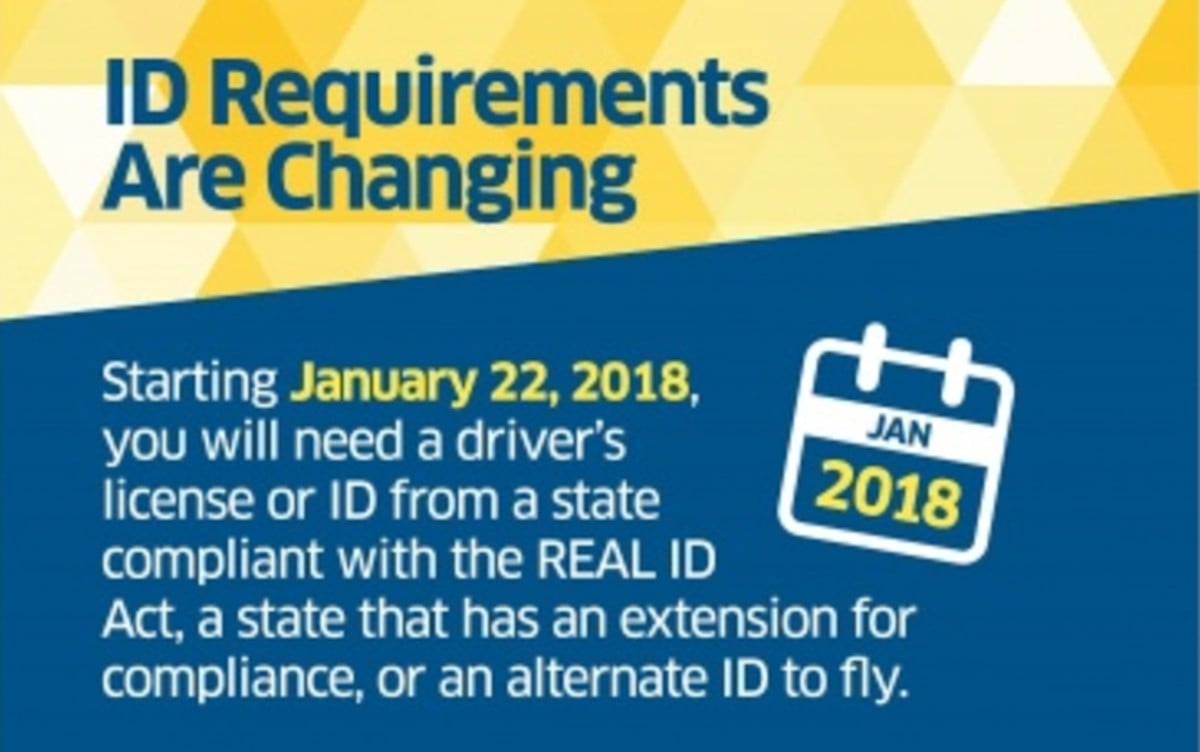 The REAL ID Act
The REAL ID Act
Per the TSA “Starting January 22, 2018, travelers who do not have a license or identification card from a compliant state or a state that has been granted an extension will be asked to provide alternate acceptable identification. If you cannot provide an acceptable form of identification, you will not be permitted through the security checkpoint. Starting October 1, 2020, every traveler will need to present a REAL ID-compliant license or another acceptable form of identification for domestic air travel.“
The Real ID Act was “enacted May 11, 2005, is an Act of Congress that modifies U.S. federal law pertaining to security, authentication, and issuance procedures standards for the state driver’s licenses and identity documents, as well as various immigration issues pertaining to terrorism.”
The Real ID act is a law that put in place requirements per Homeland Security for each state to meet when issuing driver’s licenses and ID cards. The REAL ID act not only covers the information that must be on a state issued photo id card, but also the documentation you must bring with you to verify that you are who you say you are when getting that ID card. It also covers the advanced technology in the card to make it harder to duplicate it. This act affects those who will be flying and cruising if their state is not up to standards. Currently there are phases for states to become compliant. If a state is not complaint by that phase date, their issued licenses will not be accepted by Federal Agencies, Nuclear Power Plants, or airport security check points.
Currently there are less than 25 states that are 100% complaint with the REAL ID act. As of today all but two states have a REAL ID extension until October 10, 2017 and those states may receive additional extensions past January 22, 2018. Currently only Minnesota and Missouri are not in compliance and are “still in the red” on the compliancy map. As of today their residents will need a U.S. Passport to fly within the United States starting in 2018.
Per the Homeland Security website “States and other jurisdictions have made significant progress in enhancing the security of their licenses over the last number of years. As a result, approximately 90% of all U.S. drivers hold licenses from jurisdictions: (1) determined to meet the Act’s standards; or (2) that have received extensions. Individuals holding driver’s licenses or identification cards from these jurisdiction may continue to use them as before.”
To check your state’s compliancy information visit www.dhs.gov/real-id-enforcement-brief.
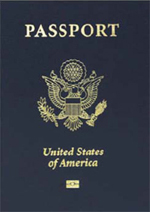
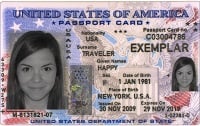
What To Do If Your State Isn’t Compliant
In speaking to the TSA, many yellow states MAY get an extension in October, but that is not a guarantee. If you have an older state issued ID and your state has recently changed how your licenses look, even if you aren’t up for renewal, look into getting the newer version of the ID Card. If you know you will be flying in early 2018, you may want to look into getting a U.S. Passport, but a word of caution don’t wait until October 2017 to apply for one as there will probably be HUGE back ups in the processing system if states that aren’t 100% compliant now either aren’t complaint come October, or don’t get an extension.
Also remember that if you elect to apply for a Passport, while you can use a Passport Card to fly domestically and for land and sea entry in Canada, Mexico, the Caribbean and Bermuda, you cannot use it as a valid Passport option if you are flying internationally. If you want more information on applying for a U.S. Passport Booklet or U.S. Passport Card, information on fees, forms and requirements can be found on the U.S. State Department website.
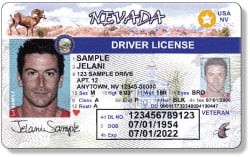
What If My State Is Compliant, But I’m Not Sure If My ID Is?
REAL ID compliant ID cards are marked. Most states Real ID driver’s license or ID cards have a gold circle with a star cutout in the upper right-hand corner. But per the Department of Homeland Security “While DHS recommends that states adopt the general design marking (aka “gold star”), per the REAL ID Security Plan Guidance Handbook, states may submit for DHS review and approval alternative methods of marking documents to clearly differentiate a compliant card from a non-compliant card. Those methods could include differentiations in color, lettering, and/or format.” So the best thing to do to make sure your State Issued ID meets Real ID compliance is to check your state’s Motor Vehicle website as each state that is REAL ID compliant seems to have put out information on their website to help residents know more about their ID card.




